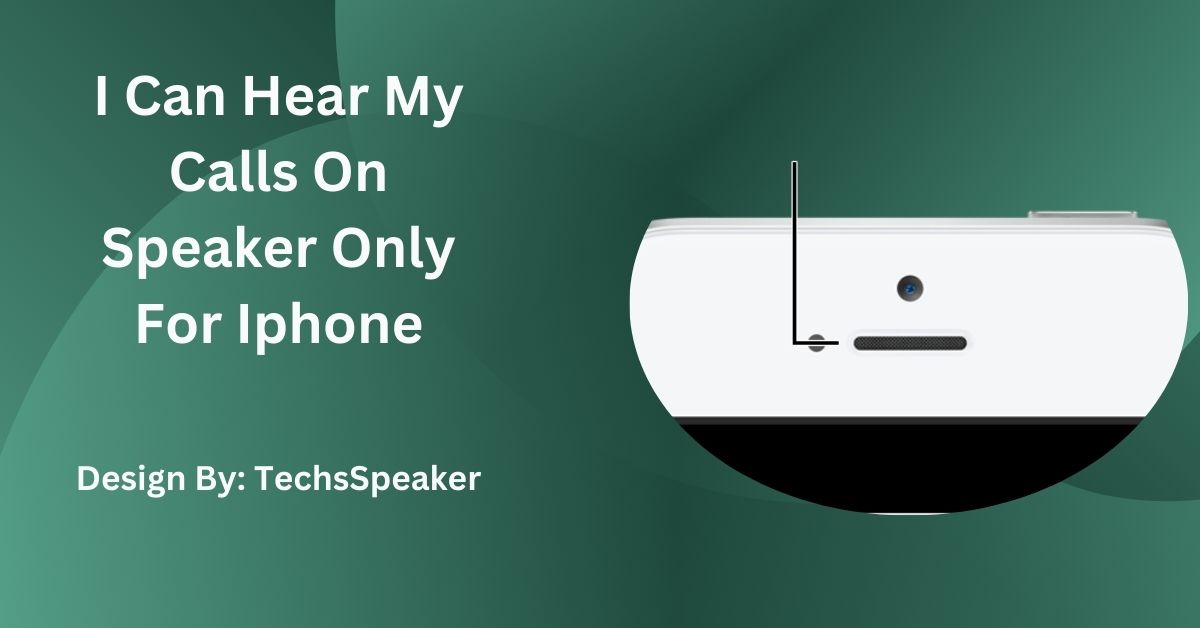IPhone call audio issues, where sound is only audible through the speaker, can stem from hardware malfunctions, software glitches, Bluetooth conflicts, or misconfigured settings. Follow troubleshooting steps to resolve.
If you’ve been in a situation where your iPhone calls are only audible through the speaker, it can be both puzzling and frustrating. This issue impacts the functionality of your device, making private conversations nearly impossible.
But don’t worry—we’ve broken this down for you. Below, you’ll find common causes, quick fixes, and when it’s time to seek professional help.
Here are a few reasons why your iPhone only plays call audio on speaker mode and not through the earpiece as expected:
- The earpiece may be blocked, damaged, or malfunctioning due to wear and tear.
- Dust, debris, or moisture could interfere with audio output, especially if the phone has been dropped or exposed to water.
- A recent iOS update or bug might cause communication issues between hardware and software.
- Temporary glitches or corrupted settings can sometimes affect audio behavior.
- If your iPhone is accidentally connected to a Bluetooth device, call audio might not play correctly through the earpiece.
- Certain accessibility settings might inadvertently direct call audio to the speaker by default.
- Recently downloaded apps that use audio permissions can interfere with phone call settings.

Here’s a step-by-step guide to troubleshoot and potentially resolve the issue on your own.
- Open Settings > Bluetooth.
- Turn Bluetooth off and check if the call audio returns to the earpiece.
- Hold down the Power button and restart your phone.
- Restarting clears temporary glitches and may fix the problem.
- Inspect the earpiece speaker for dust or debris.
- Use a soft-bristle brush or an anti-static cloth to gently clean the area.
- Avoid using sharp objects to prevent damage.
- Go to Settings > General > Software Update.
- If an update is available, install it. Sometimes new updates fix known bugs.
- Navigate to Settings > Accessibility > Touch > Call Audio Routing.
- Make sure it is set to “Automatic,” not “Speaker.”
- Delete or force quit any recent apps that may use microphone or audio permissions.
- Test a call after removing these apps.
- Plug in wired or Bluetooth headphones and check if the call audio works.
- If headphones work, the issue likely lies with the iPhone’s internal speaker hardware.
- If none of the above steps work, consider resetting the phone to factory settings.
- Go to Settings > General > Transfer or Reset iPhone > Erase All Content and Settings.
- Make sure to back up your data before proceeding!
Ensure your iPhone is running the latest software version by going to Settings > General > Software Update. Install any available updates to fix potential software-related issues.
If you have exhausted all the troubleshooting steps and the problem persists, it’s time to reach out to Apple Support for further assistance. They can provide guidance and help identify any underlying hardware issues.
Resetting all settings on your iPhone can help resolve persistent software-related issues. To do this, navigate to Settings > General > Reset > Reset All Settings. Note that this will not delete your data, but it will remove personalized settings and preferences.
Restoring your iPhone to its factory settings can be a last resort if all else fails. This erases all data and settings on your device, so make sure to backup your data before proceeding. To restore factory settings, go to Settings > General > Reset > Erase All Content and Settings.
Using Siri can help determine if the microphone and speaker are working properly:
- Activate Siri by saying, “Hey Siri,” or by pressing the home button (for older iPhones) or the side button (for newer models).
- Ask Siri a question, like “What’s the weather today?” If Siri responds and you hear it clearly, your speakers are likely fine.
Also Read: Can Comprehensive Insurance Cover A Speaker Replacement
If your iPhone has been exposed to water or moisture, it might cause audio issues:
- Ensure your iPhone is completely dry.
- Use silica gel packets or place your iPhone in a bowl of uncooked rice for 24-48 hours to absorb any moisture.
Check for any physical damage to your iPhone:
- Look for cracks or dents around the speaker and microphone areas.
- If you find any, it may be best to seek professional help for repairs.
As a temporary solution, you can use an external Bluetooth speaker or wired headset:
- Connect your iPhone to an external Bluetooth speaker or headset.
- Test to see if you can hear calls clearly.
Taking preventive measures can help avoid similar issues in the future:
- Regular Cleaning: Keep the earpiece and speaker grills clean.
- Software Updates: Regularly update your iOS to benefit from bug fixes and improvements.
- Protective Cases: Use a protective case to shield your iPhone from dust and debris.
- Avoid Water Exposure: Keep your iPhone away from water and moisture.
- Handle with Care: Avoid dropping or mishandling your iPhone to prevent physical damage.
This issue can be caused by hardware problems, software glitches, Bluetooth conflicts, or incorrect audio settings.
Use a soft-bristle brush or an anti-static cloth to gently clean the earpiece area. Avoid using sharp objects or liquids to prevent damage.
If troubleshooting steps don’t resolve the issue, contact Apple Support or visit an Apple Store for professional assistance. There may be underlying hardware issues.
Yes, updating your iPhone’s software can resolve bugs and improve performance. Go to Settings > General > Software Update to check for and install updates.
Navigate to Settings > Accessibility > Touch > Call Audio Routing, and ensure it is set to “Automatic.” This directs call audio to the correct output.
If you’re experiencing issues with hearing calls only through the speaker on your iPhone, it can be frustrating but manageable. Common causes include hardware issues, software glitches, Bluetooth conflicts, and incorrect settings. By following the troubleshooting steps provided, such as cleaning the earpiece, checking settings, and updating software, you can often resolve the issue. If problems persist, professional help from Apple Support may be necessary. Regular maintenance and updates can help prevent future audio problems, ensuring your iPhone continues to function smoothly.
